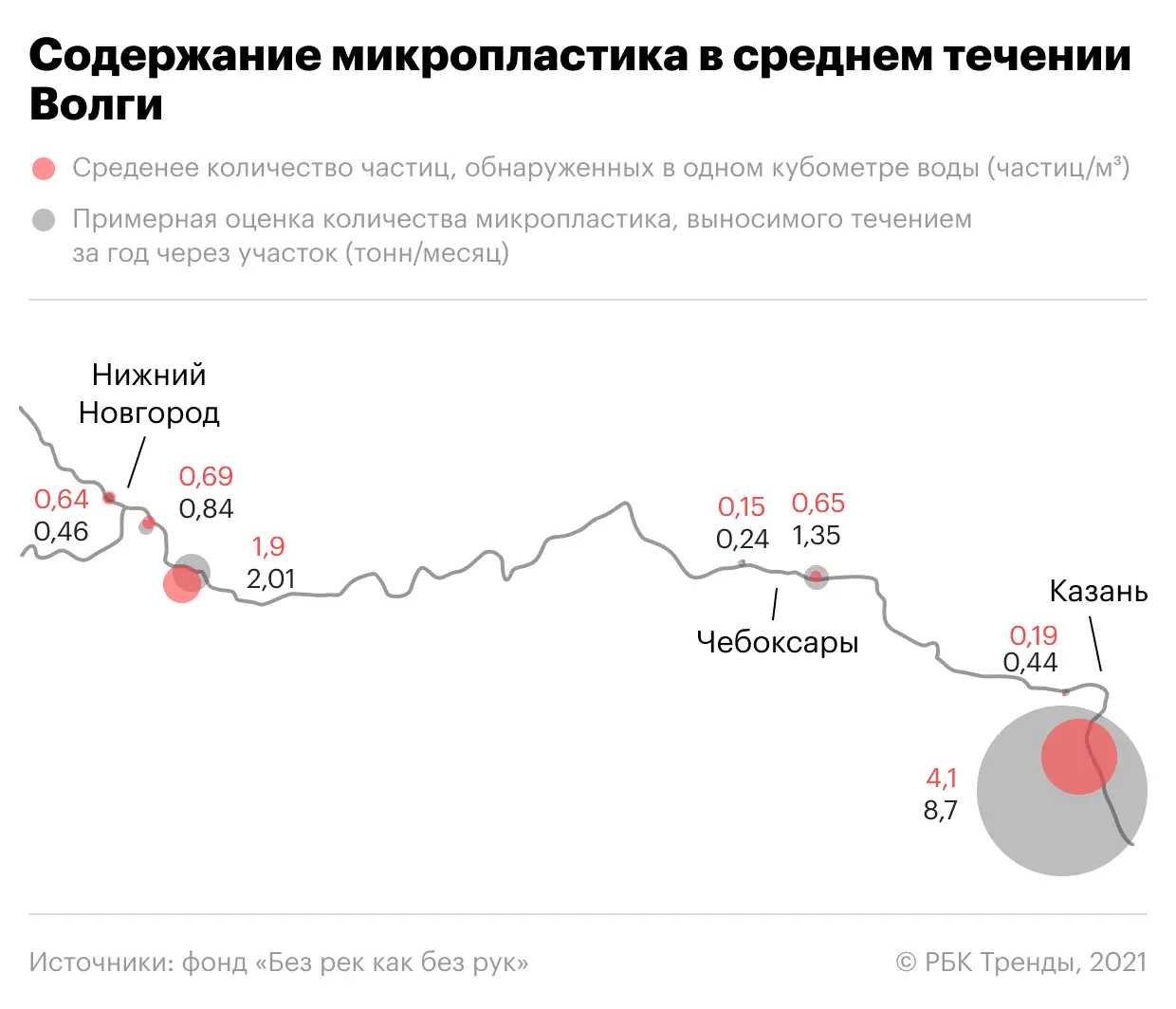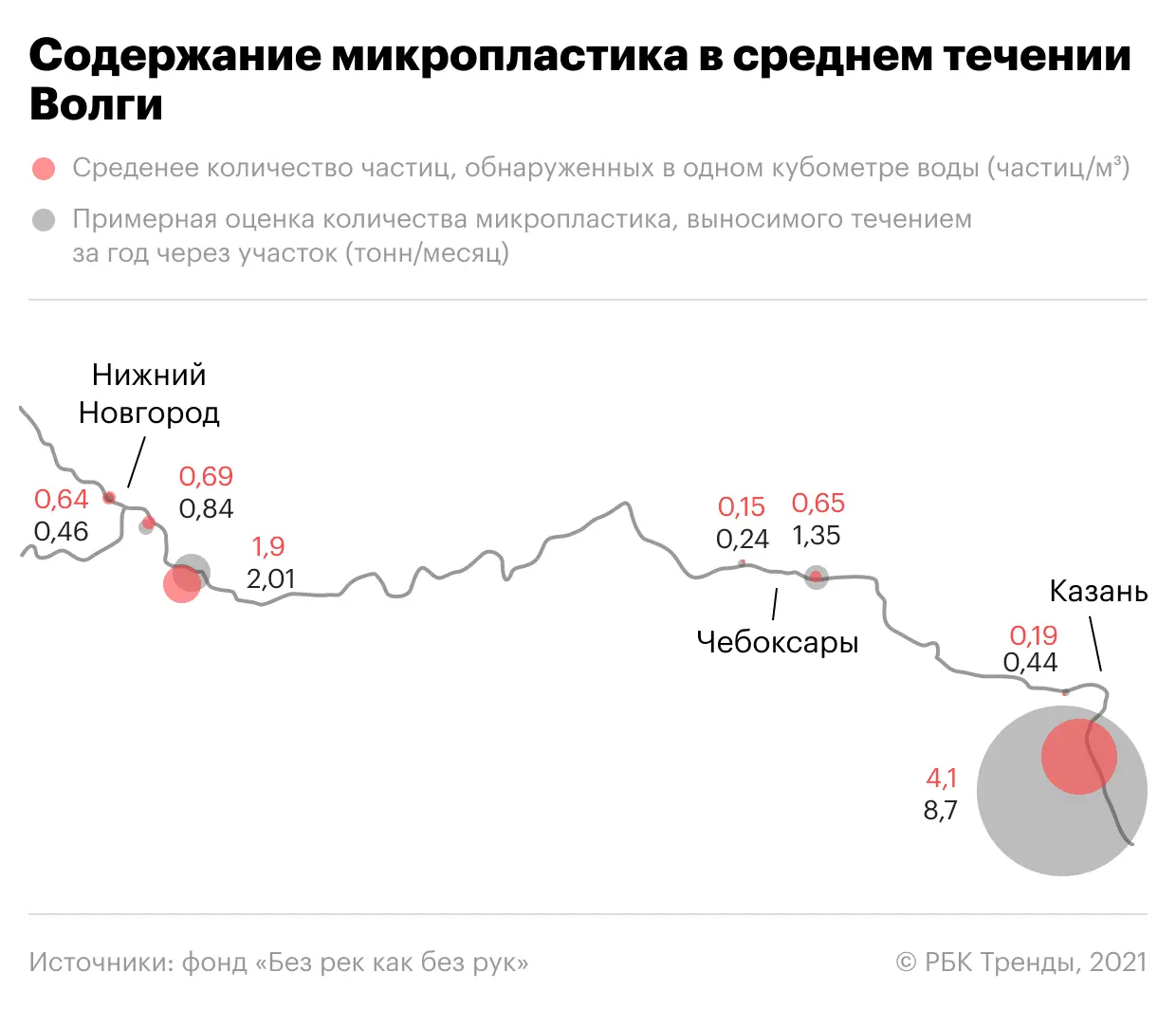Contents
In autumn, the No Rivers, No Hands Foundation continued to study microplastics in the middle reaches of the Volga, from Nizhny Novgorod to Kazan – millions of residents, dozens of enterprises, large reservoirs of the Nizhny Novgorod and Cheboksary hydroelectric power stations
The Foundation “No Rivers, No Hands” is engaged in the environmental assessment of water quality in inland water bodies in our country, and was the first in our country to develop a comprehensive program for studying microplastics in Russian rivers. Previously, the foundation conducted comprehensive studies, including a quantitative assessment of the content of microplastics, on the Don, in the Tsimlyansk and Mozhaisk reservoirs, in the Oka River. This year, for the first time, the Foundation’s specialists conducted research on the content of microplastics in the Volga, the largest river in Europe.
In July 2020, as part of the Clean Volga project, the foundation’s experts studied the quality of water in the Upper Volga within the Tver region. In September, the second stage of the study took place – this time the ecologists took a segment of the Middle Volga from Nizhny Novgorod to Kazan.
Main conclusions
Ecologists found microplastics in all samples taken. Above large cities, its content is in the range from 0,1 to 1 particle per cubic meter of Volga water. This is an alarming but not dangerous level of pollution. The particles are dominated by fibers and films. After Nizhny Novgorod, the amount of microplastic increases to 2, and below Kazan, where, in addition to films, the number of fragments sharply increases – even up to 4 particles per cubic meter, and this is already dangerous pollution.


The average content of microplastics was about 1,2 particles or 0,35 mg per cubic meter of water, which is 20% higher than in the upper reaches of the Volga. And taking into account the much larger volume of runoff, the removal of microplastics by the Volga below Kazan can already be estimated at 24 tons per year. This is 20 times higher than its annual removal from the territory of the Tver region.
Features of the Middle Volga in the region of Nizhny Novgorod
A significant influence on the Volga near Nizhny Novgorod is exerted by the Oka, which flows into this place. An analysis of samples taken at the mouth of the Oka and a few kilometers downstream of the Volga near the right bank showed that in fact, this is the Oka water, which, in comparison with the Upper Volga, is characterized by exceeding the maximum permissible concentration (MPC) for strontium, vanadium, aluminum and a multiple excess for manganese. Exceeding the MPC for biogenic substances, the expedition found only below the output of treatment facilities in Nizhny Novgorod, and then only for nitrites and phosphates. Complete mixing of the waters of the Volga and Oka, which carries more turbid and mineralized waters with a high content of chlorophyll, occurs only 30 km downstream, when the difference in samples from the left and right banks disappears.
The content of harmful substances in the middle reaches of the Volga
The Cheboksary reservoir is characterized by the stability of hydrochemical and other parameters. The exception is the Cheboksary Bay, where an excess of nitrites, copper and zinc was noted. From the point of view of pollution with heavy metals, the Rosinka beach area is unfavorable – on the left bank of the Volga, across the river from Cheboksary.
Throughout the middle reaches of the Volga, a large number of floating algae are noted, while no cyanobacteria were found, and the chlorophyll content is at a normal level. The maximum of chlorophyll was noted at the confluence of the Oka and Kazanka rivers, as well as at the outlet of the treatment facilities of Nizhny Novgorod.
- Dissolved oxygen
Its content is close to maximum saturation and does not fall below 7,7 mg/l, including profiling at several points up to a depth of 10 m.
- nitrite nitrogen
Nitrite nitrogen excesses were noted in more than half of the samples, reaching 2,5 MPC at the outlet of treatment facilities in Nizhny Novgorod, in the Cheboksary Bay, at the outlet of treatment facilities in Kazan and near the village of Otara. These points are unequivocally connected with human activity.
- Nitrite
Excesses in nitrite content were also found in the long section between the underwater outlet of the Novocheboksarsk treatment facilities and Sviyazhsk, but the effluents cannot affect the composition of river water for such a long time.
- Phosphate phosphorus
Excesses of MPC for phosphate phosphorus were found only in single samples, but each of them is indicative: below the sewage treatment plants in Nizhny Novgorod and Kazan, at the cardboard plant in Volzhsk and in the river port of Kazan. This is a clear signal that poorly treated wastewater enters the Volga. Of all the biogenic elements, phosphorus has the most harmful effect, enhancing the already active flowering of the Volga water.
- Chemical oxygen demand
On the segment from Nizhny Novgorod to Novocheboksarsk, the COD indicator exceeds the recommended values by an average of 1,5 times, but there is no excess downstream.
- Other substances and metals
The previous expedition of the Fund along the Upper Volga showed significant excesses of manganese, iron and aluminum relative to the standards for fishery reservoirs – in the middle reaches of the Volga, these figures decrease several times. But the manganese excess remains ubiquitous, and the Oka River makes the most significant contribution to it – up to 15 MPC in the Nizhny Novgorod region, while samples taken along the left bank of the Volga, opposite from the confluence of the Oka, remain at the level of 4-5 MPC. The same concentrations of manganese persist further in Cheboksary and Kazan.
In the section from Cheboksary to Kazan, in the Volga water, COD and concentrations of almost all metals, the MPCs of which are exceeded upstream, are almost halved. But at the same time, the high content of nitrites becomes constant.
Below the output of the Kazan wastewater treatment plant, environmentalists revealed a threefold excess in phosphates and nitrates. The highest concentration of microplastics in the middle reaches of the Volga was also found here.
What does this data mean?
The study confirmed determining the contribution of treatment facilities to the pollution of river water with microplastics. Novocheboksarsk wastewater treatment plants, with approximately the same productivity as in Nizhny Novgorod and Kazan, have a much smaller negative impact. This is largely the result of the recently introduced effluent filtration technology on them before being discharged into the Volga. Simply installing fine filters at outlets can reduce river water pollution by microplastics by a factor of ten, which is a good first step.
Subscribe to our “Green” channel in Telegram. We publish the latest research, eco-news and tips that will help you live without harming nature.










